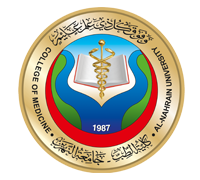|
Vol. 16 Issue 4 October - December / 2018
Published on website | Date : 2019-04-29 10:17:58
8.EXTRACTION, PURIFICATION AND THERAPEUTIC USE OF BACTERIOPHAGE ENDOLYSIN AGAINST MULTI-DRUG RESISTANT PSEUDOMONAS AERUGINOSA: AN IN-VITRO AND IN-VIVO STUDYMohammed R. Ali, Shurooq R. Kadhim, Ahmed S. AbdulamirAbstractBackground: Persistent infection with multidrug resistant Pseudomonas aeruginosa (P. aeruginosa) represents a real problem for health care providers. Bacteriophage lytic enzymes or lysins are highly evolved molecules that have been specifically developed by phages to quickly and efficiently allow their progeny to be released from the host bacterium while destructing that bacterium.
Objective: Isolation of endolysin from P. aeruginosa bacteriophages, and administering them systematically in vivo lab animal and measuring their therapeutic efficacy as well as evaluation of their biosafety. Methods: This study was performed from March 2015 – August 2017, during which 50 bacteriological samples of P. aeruginosa were collected, and examined for their antibiogram, then bacteriophage cocktails were done for 5 resistant strains of them. Endolysins were extracted from their corresponding bacteriophages and characterized. The enzymatic and antibacterial activities as well in vivo therapeutic efficiency of these enzymes were investigated. Results: This study showed that the extracted endolysin from these bacteriophages was effective in treating laboratory mice from bacteremia with P. aeruginosa and saving their lives when injected intraperitoneal. Conclusion: Endolysin can be extracted directly from their bacteriophages and used effectively in proper doses to treat bacteremia in mice. Keywords: Pseudomonas aeruginosa, bacteriophage, endolysin, MDR Citation: Ali MR, Kadhim SR, Abdulamir AS. Extraction, purification and therapeutic use of bacteriophage endolysin against multi-drug resistant Pseudomonas aeruginosa: An in-vitro and in-vivo study. Iraqi JMS. 2018; 16(4): 405-412. doi: 10.22578/IJMS.16.4.8 Full-text |
Some tools below are only available to our subscribers or users with an online account |
 |
Please wait until the current process completes ... |



